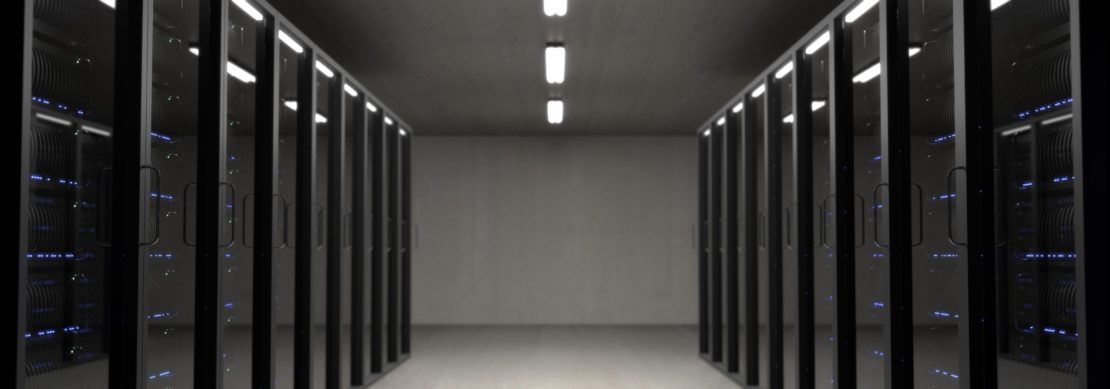
Cryptocurrencies, data centers… how do they affect global energy consumption?
In 2017, the digital ecosystem represented approximately 7% of the world’s electricity consumption[1], from the production of our electrical devices through to the energy required to power data centers. This figure could reach 12% by 2020, and increase by approximately 7% per year until 2030. Although the digital revolution has undeniably allowed easier and more generalized access to information, it also comes at a substantial cost to the planet, so energy-intensive are the associated technologies. This is borne out by the alarming energy consumption figures for cryptocurrencies or the carbon footprint of the data centers required for the storage of our data. By way of example Bitcoin, a booming virtual currency, has a consumption equivalent to that of 159 countries, including Ireland and Slovakia[2]. Furthermore, a simple Google search is responsible for 0.2 grams of CO2 emissions.[3] The need to find solutions and develop sustainable models to ensure the digital revolution can last is therefore becoming a matter of urgency. As a result, there are an increasing number of initiatives from private players, to ensure that the digitalization of our company does not come to the detriment of the planet.
“Server farms”, the digital attics of the planet
When we talk of the Cloud, or of the digitalization of data and services, it is difficult to imagine the energy expenditure generated by these technologies. And yet data centers, immense hangars containing long rows of servers, routers and switches, are working constantly to store, manage and make available online a considerable mass of data[4]. Databases, e-commerce sites, social networks, emails, streaming videos, cloud computing services and cryptocurrencies are just some of the things stored there. To deal with the exponential growth in our storage requirements, France is expected to have almost 200 data centers in 2020, primarily located in the Ile-de-France region[5].
Operating these centers gives off enormous amounts of heat, requiring constant cooling to avoid any failure, which would lead to the risk of an interruption or a drop in performance. The consumption of a very large data center can thus reach 100 million watts (100 MW), one tenth of the production of a thermal power plant![6] Therefore, even when in low demand, these servers continue to consume large amounts of energy in order to guarantee permanent and optimum access for users, and expose us to new energy challenges, the full extent of which is not yet known by States or by public opinion. The figures need be studied closely, since use of the cloud may prove a more ecological choice for some companies than traditional storage on site. Large-scale cloud providers actually tend to have optimized and less energy-intensive cooling devices, and sometimes even invest in green energies.[7]

Nothing goes to waste, everything is reused
Fortunately, solutions exist to limit these risks. Web giants such as Google, Amazon or Facebook are increasingly turning to renewable energies, thus limiting the ecological impact of their activity. The famous search engine has in fact invested 700 million dollars in a data center running on renewable energy in Denmark.[8] Rexel also supports data centers from the choice through to the installation of high-performance equipment in energy terms, aiming to reduce their bill and their environmental footprint.
Furthermore, data centers can be used as heat networks to heat public buildings or company warehouses. Recently, the Casino Group confirmed that this type of installation would allow it to reduce its carbon footprint by 75%. Since 2017, the swimming pool at Butte-aux-Cailles in Paris has used a digital boiler to heat its water to 27°C: computer servers, submerged in an oil bath, transfer their heat to the two pools.[9] These are national and local initiatives which get people talking, and provide signs of a progressive collective awakening.
Cryptocurrencies, the modern-day gold rush…
In less than a decade, the value of Bitcoin has gone from 1 to 20,000 dollars. Prices have surged as a result of speculation linked to the global craze around cryptocurrencies. These virtual currencies use the blockchain, a transparent and secure technology for the storage and transmission of information, working with no central control[10]. Bitcoin has a market capitalization of 67 billion dollars, and 13 million Americans already buy and sell virtual currencies on CoinBase, the digital currencies exchange. XRP, the Ripple currency, last year rose 36,000%. Mind-boggling figures, to which another increasingly worrying problem of an environmental nature must be added.

…leading to fears of a new ecological abyss?
A veritable technological and financial revolution, the boom in virtual currencies nonetheless asks questions as to their ecological footprint. The decentralized transaction verification system, called “mining”, requires enormous computing powers, which are behind an exponential energy consumption. Furthermore, with mining algorithms becoming increasingly complex over time, the consumption involved in the creation or transaction of each Bitcoin is only expected to increase in the coming years. By way of example, the power required for Bitcoin transactions is equivalent to the energy consumption of Ireland[11].
Conversely, certain cryptocurrencies are attempting to adopt a more respectful approach towards the environment, or even to have a positive impact, working towards an energy transition. This is the case for example with SolarCoin, a virtual currency created to encourage the production of green energy: for each 1 MWh of solar energy produced, producers can receive 1 SolarCoin (SLR). This currency can then be used like any other cryptocurrency, and is also accepted by certain renewable energy providers.
No revolution comes without obstacles along
the way, and the digital revolution is no exception to this rule. The digital
transformation of our companies has seen the emergence of a mass of computer
data, the use and storage of which are genuine challenges in terms of energy
consumption. Data centers or the Blockchain are driving many experts to develop
solutions to reconcile these developing energy-intensive technologies with
environmental considerations, which are also increasing. Positive
initiatives from private players are multiplying, paving the way for a more
responsible design for the storage of our data.
[1] GreenPeace report: https://www.greenpeace.fr/il-est-temps-de-renouveler-internet/
[2] https://www.sciencesetavenir.fr/high-tech/la-crypto-monnaie-bitcoin-consomme-plus-d-electricite-que-159-etats-dans-le-monde_118729
[3] https://www.lebigdata.fr/big-data-bitcoin-catastrophe-environnement
[4] https://lejournal.cnrs.fr/articles/numerique-le-grand-gachis-energetique
[5] https://www.usine-digitale.fr/article/la-france-devrait-compter-200-grandes-centrales-numeriques-en-2020-vingt-de-plus-qu-aujourd-hui.N748244
[6] https://lejournal.cnrs.fr/articles/numerique-le-grand-gachis-energetique
[7] https://www.lesechos.fr/thema/0600077072687-lentreprise-peut-elle-concilier-cloud-et-rse-2227459.php
[8] https://www.presse-citron.net/google-investit-700-millions-data-center-vert-danemark/
[9] https://www.lepoint.fr/high-tech-internet/le-groupe-casino-remplace-ses-radiateurs-par-des-data-centers-23-12-2018-2281543_47.php
[10] Definition from Blockchain France
[11] https://www.clubic.com/bitcoin/actualite-843663-bitcoin-consomme-energie-irlande.html

